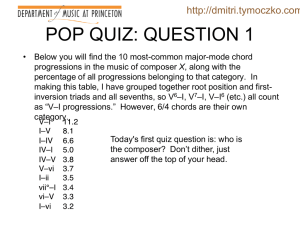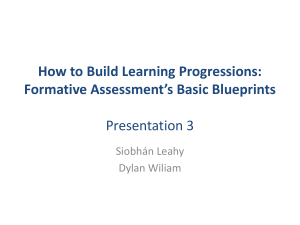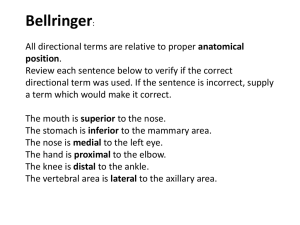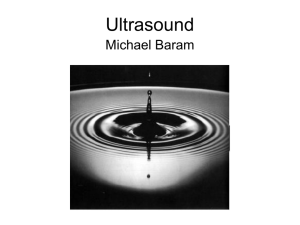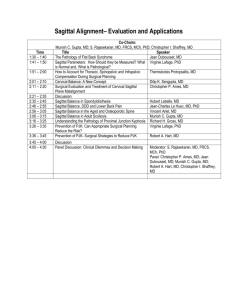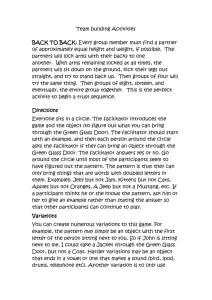Relative Flexibility
advertisement
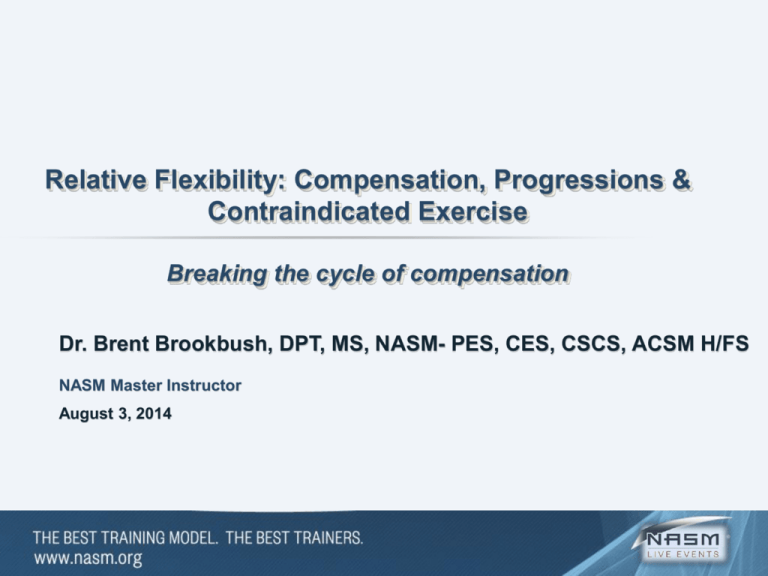
Relative Flexibility: Compensation, Progressions & Contraindicated Exercise Breaking the cycle of compensation Dr. Brent Brookbush, DPT, MS, NASM- PES, CES, CSCS, ACSM H/FS NASM Master Instructor August 3, 2014 “It’s not enough to increase movement quantity, if you can also increase movement quality” – B2 Relative Flexibility • Relative Flexibility – A hypothesis introduced by Shirley A. Sahrmann (Diagnosis and Treatment of Movement Impairment Syndromes) • “…stiffness in one muscle group or joint will cause compensatory movement at adjoining joints that are controlled by muscles and soft tissues that exhibit less stiffness.” What does that mean? • Your body will follow the path of least resistance! Defining Relative Flexibility Progressions • Relative flexibility progressions are gross movement progressions designed to decrease the reliance on compensatory movement patterns during resistance training, while an Integrated Warm-up/Corrective Exercise Program is “practiced”. Goal • Reduce the likelihood that compensation patterns will be adopted during the resistance training program. • Assumption #1: An integrated warm-up or corrective exercise program has been adopted Assumption #2: Based on a Standard Resistance Training Template! • • • • • • Total Body Chest Back Shoulders Arms Legs • Can be applied to any phase of training! Relative Flexibility Progressions Upper Body Progressions Back/Pulling 1. Sagittal Plane Row 2. Frontal Plane Pull Down 3. Horizontal Row Chest/Pushing 1. Sagittal 2. Transverse 3. Incline Shoulders/Pressing 1. Scaption 2. PNF Carry Away 3. Sagittal Plane Press 4. Frontal Plane Press General Relative Flexibility Progressions Lower-Body Whole Body: 1. Leg Press/Ball Wall Squats 2. Squats 3. Step-Ups 4. Lunges 5. Single Leg Squat Touch Down 1. Ball Wall Squats with Arms 2. Squats with Arms 3. Step-Ups with Arms 4. Lunges with Arms 5. Single Leg Squat Touch Down with Arms Alternative • Dead Lifts UBD Relative Flexibility Template • Chest 1. 2. 3. • • Sagittal Plane Transverse Plane Incline Shoulders 1. Scaption 2. Then Carry Away 3. Then Overhead Sagittal 4. Then Overhead Frontal Plane • Back 1. Sagittal Plane (Below Shoulder) 2. Then Sagittal Plane (Above Shoulder) 3. Then Frontal Plane 4. Then Transverse Plane Arms – – • Tricep Extenstions (No Overhead) No Biceps Lower Body – No Restrictions LPHCD Relative Flexibility Template • Chest – No Restrictions • Shoulders • Arms – No Restrictions • Lower Body – Scaption – Squats – PNF Carry Away – Step-Ups • Nothing Overhead • No Deadlifts • Back – Sagittal Plane (Below Shoulder) – Sagittal Plane (Above Shoulder) • • No Lunges Nothing Overhead LLD Relative Flexibility Template Chest – No Restrictions Back – No Restrictions Shoulders – No Restrictions Arms – No Restrictions Lower Body 1. Leg Press and/or Ball Wall Squat 2. Squats with Anterior Load 3. Squats 4. Step-Ups • Larger Box = More flexibility needed 5. Then Lunges – Potential Alternative: • Deadlifts Stability Progressions Review Practical Application • Stability - The ability to optimally recruit motor units to oppose disturbances in equilibrium – Stability progressions are built upon several general progressions that can be applied to any exercise. Body Position & Planes of Motion • Body Position: 1. Lying 2. Sitting 3. Standing • Planes of Motion: 1. Sagittal 2. Frontal 3. Transverse Modality • Modality Progressions: 1. 2. 3. 4. 5. 6. 7. Machine Barbell Dumbbell Cable/Band Kettle-Bell Suspension Training Etc. Environment • Unstable environments: 1. 2. 3. 4. 5. 6. 7. 8. Ground Ab-mat Airex Pad Half-Foam Roll Uni-planer Balance Board PB Disk Bosu Flat Side Up Etc. Neuromuscular Progressions • Upper-body stability progression: – Bilateral – Alternating – Unilateral • Lower-body stability progression – – – – 2 Legs 1 Leg 2 Legs Unstable 1 Leg Unstable Special Note • There are several intermediary steps, a wide variety of modalities, and creative new exercises that should be tested and added to your progressions. Further Resources • BrentBrookbush.com – Strength Progressions Building a Routine Template • What is the goal? • What phase are we in? • What’s the dysfunctions? Building your routine Body-part Total Body Chest Shoulders Back Arms Legs Restriction Progression Lets Do It! • • • • • • • • Sagittal Plane Push-ups Sagittal Plane Press Sagittal Plane Row Cobras Scaption Ball Wall Squat Ball Wall Squat with Upper Body Squat with Anterior Load (Squat to Row) Q & A – Questionable Exercises Relative Flexibility and Contraindicated Exercise • • • • • Kettle-bell Windmill Straight Leg Deadlifts Dips Turkish Get-Up Knees Out Squat Take Away - Initial Programming Total Body – Squat to Row Chest – Sagittal Press Back – Sagittal Row or Cobra Shoulders – Scaption or UBD Corrective Exercise Arms: – Triceps Extensions (or no arms) Legs – Single Leg Touchdown Take Away – Full Disclosure • These progressions will not work every time, but should decrease the likelihood that clients will compensate and complain of pain. Contact Information • Brent Brookbush – Brent.brookbush@nasm.org – Brent@BrookbushInstitute.com • NASM – www.nasm.org – 800.460.6276 Thank You! For Your Commitment to Excellence
